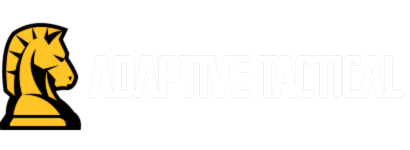Appendix Carry vs. Behind-the-Hip Carry: Choosing the Best IWB Holster Position
Carrying a concealed handgun effectively requires the right combination of holster, firearm, and position. Among Inside-the-Waistband (IWB) carry positions, two of the most popular options are appendix carry (AIWB) and behind-the-hip carry (typically 3-5 o’clock for right-handed shooters). Each has its advantages and trade-offs, depending on body type, comfort, accessibility, and concealability. In this article, we break down the benefits of both to help you decide which works best for your everyday carry (EDC) needs.
What Is Appendix Carry?
Appendix Inside-the-Waistband (AIWB) carry positions the firearm in front of the body, usually between the 12 o’clock and 2 o’clock position for right-handed shooters (or between 10 o’clock and 12 o’clock for left-handed shooters).
Benefits of Appendix Carry
- Faster Draw Time
- The gun is positioned closer to the centerline, allowing for a natural and quick drawstroke. Less movement is required to establish a grip and present the firearm on target.
- AIWB reduces the distance your hand has to travel, making it ideal for fast defensive engagements.
- Better Retention & Security
- Since the firearm is in front of your body, it is easier to protect from an attacker trying to disarm you.
- AIWB allows you to maintain visual contact with your firearm when reholstering, minimizing the risk of a negligent discharge.
- Improved Concealability
- AIWB can be easier to conceal with the right clothing, as the firearm is tucked into the natural contours of the body.
- A smaller handgun or a well-designed holster can significantly reduce printing, even under light clothing.
- More Comfortable While Standing & Moving
- Many users find AIWB comfortable when standing, walking, or moving since the holster naturally conforms to the abdomen.
- AIWB also allows for easier sitting and driving adjustments, provided the holster is designed with comfort in mind.
Challenges of Appendix Carry
- Discomfort While Sitting – Some individuals, especially those with a larger midsection, may find appendix carry less comfortable when sitting for extended periods.
- Potential Muzzle Safety Concerns – AIWB points the muzzle near sensitive areas of the body, requiring strict trigger discipline and careful reholstering techniques to minimize risks.
What Is Behind-the-Hip Carry?
Behind-the-hip carry places the firearm between the 3 and 5 o’clock position for right-handed shooters (or 7 and 9 o’clock for left-handed shooters). This is one of the most traditional carry methods for both concealed and open carry.
Benefits of Behind-the-Hip Carry
- Comfort for Extended Sitting
- This carry position reduces pressure on the abdomen, making it a popular choice for individuals who spend long periods sitting or driving.
- Less direct contact with the stomach allows for better comfort for certain body types.
- Proven & Familiar
- Many shooters are already accustomed to drawing from this position, as it mimics traditional duty holster placements.
- A natural and intuitive drawstroke for those experienced with strong-side OWB or IWB carry.
- Less Muzzle Sensitivity
- Unlike AIWB, the gun’s muzzle is pointed downward or toward the rear, reducing concerns about self-muzzling during reholstering.
Challenges of Behind-the-Hip Carry
- Slower Draw Time – The hand has to travel farther to establish a proper grip, which can increase draw time compared to appendix carry.
- More Difficult to Defend in a Struggle – The firearm is positioned behind the torso, making weapon retention harder in close-quarters confrontations.
- Increased Printing Risk – A handgun carried behind the hip may cause noticeable printing when bending over or reaching.
- More Difficult to Reholster – Since the holster is positioned behind the hip, reholstering requires more effort and less visibility, increasing the risk of an unsafe reholster.
Which Carry Method is Best for You?
Choose Appendix Carry If:
- You prioritize faster draw speed and better weapon retention.
- You have a well-designed holster that ensures safe and comfortable AIWB carry.
- You want optimal concealment with minimal printing.
Choose Behind-the-Hip Carry If:
- You prefer a more traditional carry position and don’t mind a slightly slower draw.
- You spend long hours sitting and want added comfort.
- You’re concerned about muzzle placement and want a more downward-facing holster orientation.
Final Thoughts
Both appendix carry and behind-the-hip carry have their place in the world of concealed carry. The best choice depends on your lifestyle, training, and comfort level. Regardless of your decision, proper holster selection, consistent training, and safe gun-handling practices are essential for effective concealed carry.
If you’re new to AIWB or behind-the-hip carry, consider experimenting with both positions using a quality holster and dedicated dry-fire practice to find what works best for you. Carry smart, train often, and stay safe.
Also in BLOG

8 Ruger 10/22 Family Range Games (With Pro Tips for Dad & Kids)
Ready to make your next trip to the range a memory your family will talk about for years? The Ruger 10/22 is perfect for introducing youngsters to marksmanship—it’s light, low-recoil, and fun to shoot. Below are eight range games to sharpen skills and spark smiles.

Less Clothing, More Confidence: 7 Conceal-Carry Secrets
As the temperature climbs, fewer layers make concealing a firearm more challenging—but far from impossible. By combining the right holsters, carry systems, and clothing choices, you can stay cool, comfortable, and covered all summer long.

Top 8 Pro Tips for Your Family’s Bug‑Out Vehicle
Selecting the ideal urban family “bug‑out” vehicle (BOV) requires balancing storage, off‑road prowess, fuel range, reliability, maintenance ease, power/communications, seating comfort, and customization potential. Each feature ensures you can evacuate swiftly, carry essential gear, stay powered and informed, and keep your family safe and comfortable—all while adapting your rig for the unpredictable urban environment. Below are the eight critical features, each paired with a Survivalist Pro Tip.
